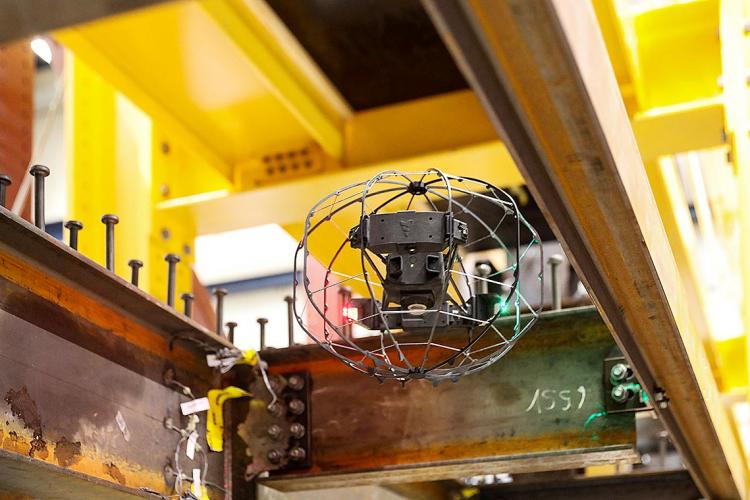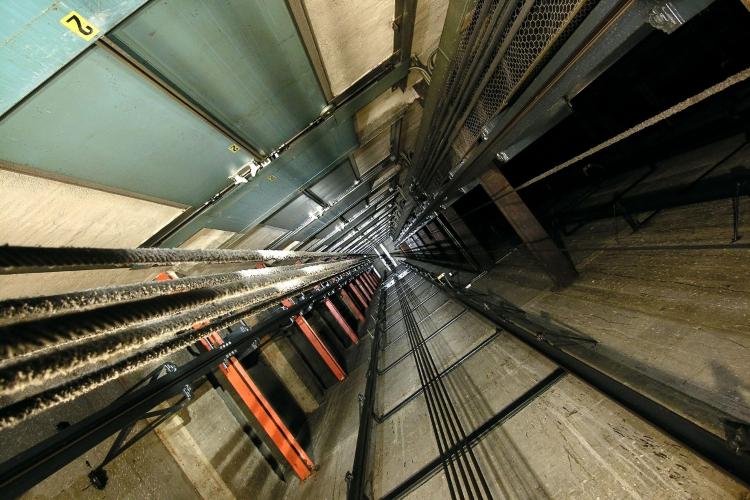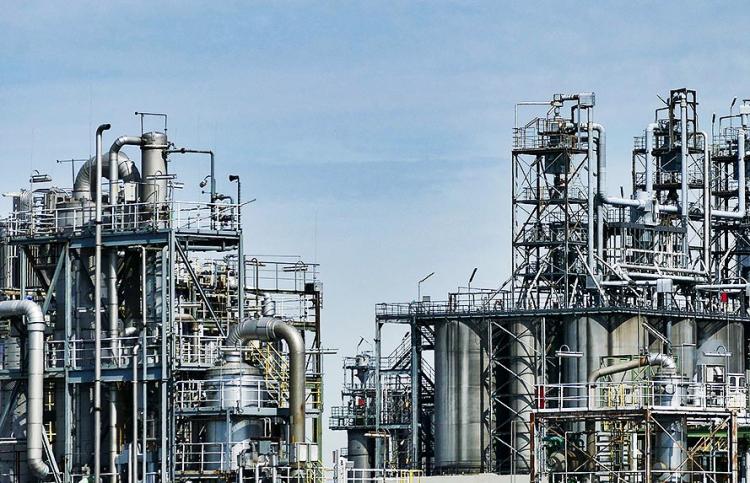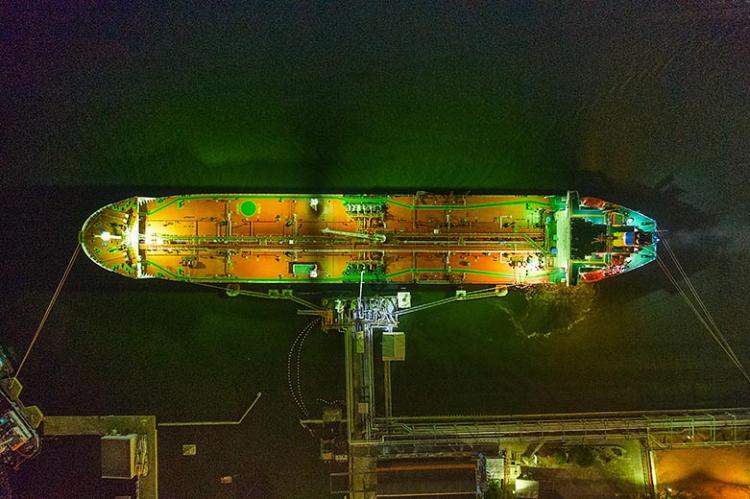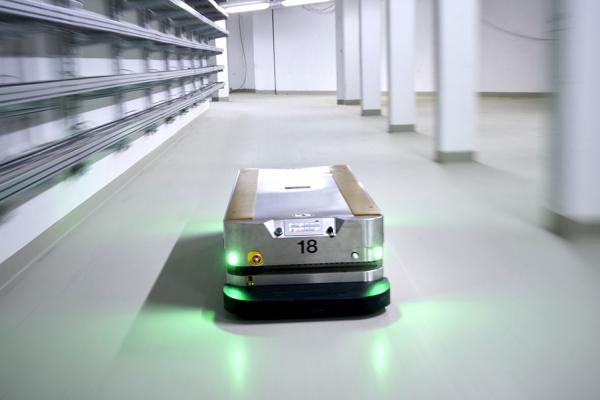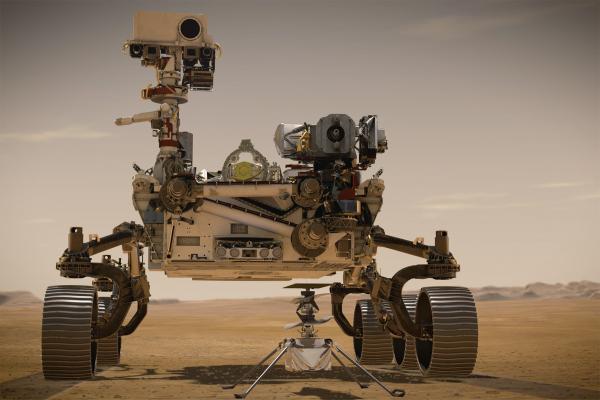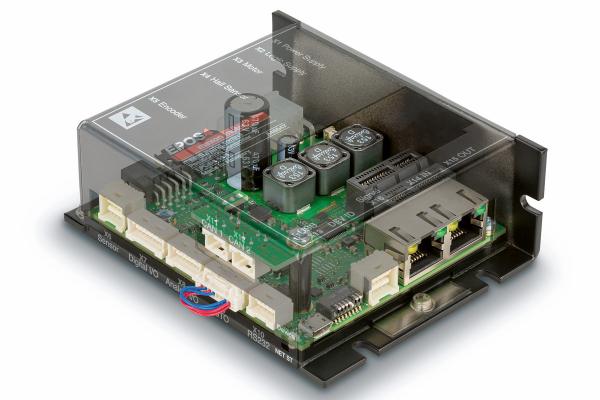Samir Bouabdallah, why do you find drones fascinating?
When I started working on the topic of drones 20 years ago, it was a new, exciting field. Everyone in research knew that this technology would have a major influence on society. For me, it is very rewarding to be involved in this development.
How do you go about becoming an expert in unmanned aircraft?
As a student in Algeria, I followed the development of robotics in Europe with rapt attention and was fascinated by it. I wanted to also develop something from scratch that can move. Right after I graduated, I went to Switzerland – with little money in my pockets. At the EPFL in Lausanne, I met a professor who took a look at my work. He introduced me to robotics expert Roland Siegwart, who offered me an internship and later made it possible for me to write my doctoral thesis. He was also the one that advised me to focus on flying robots. That was 2002 – at the beginning of the drone era. In hindsight, I was lucky. I was in the right place at the right time.
How has drone technology developed since then?
At the speed of light! Back when we started our work, there were only around four academic groups worldwide who were working on drone technology. Based on this groundwork, the first companies were founded four to five years later. Many professors then started to pick up on the topic. At first, the focus was on how quadcopters can be stabilized, then it shifted to GPS-based control. Later, image-based navigation was added, and today, people are working on artificial intelligence for the control systems. The topic was and still is attractive for student projects. At the start of each semester, I have a line of students outside my office, all of whom want to work on drone projects.
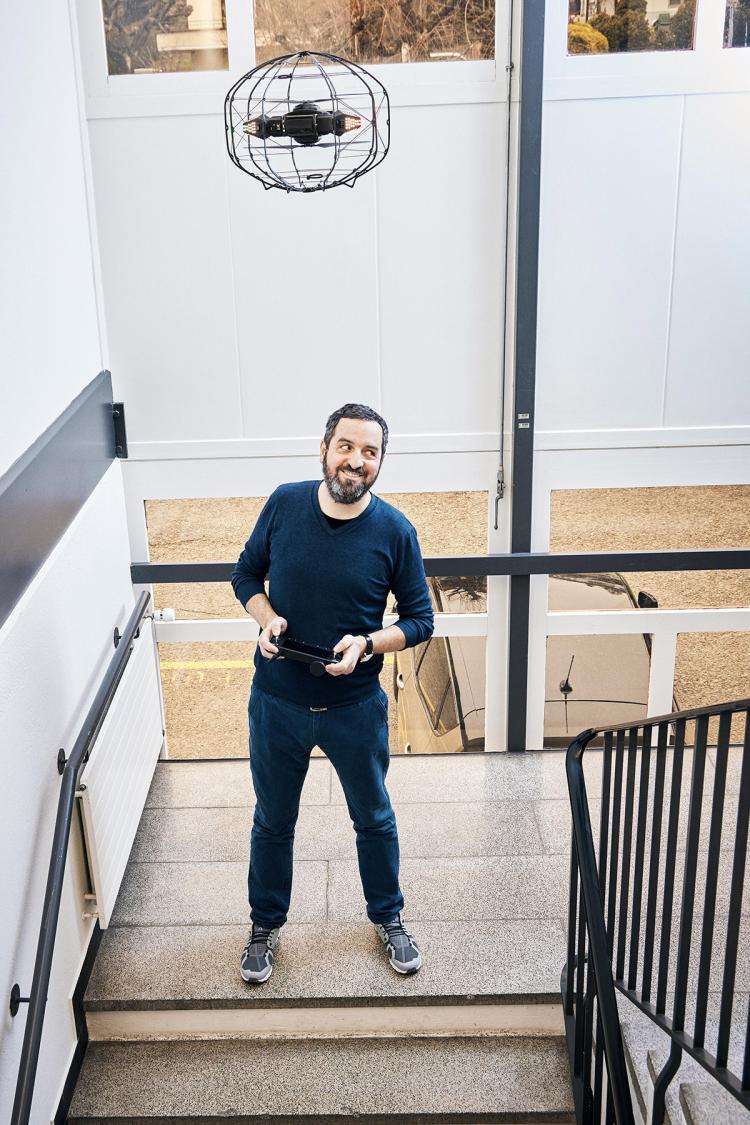
How did electric motors contribute to this development?
The transition from brushed to brushless DC motors was key. Efficiency was significantly improved. The higher continuous torque of the motors made gearheads superfluous, reduced the weight, and increased reliability. All of this – along with improved battery technology – resulted in a significantly longer flight time.
What requirements do motors have to meet with regard to drones?
In most cases, you need high torque, high power density, vibration and temperature resistance, as well as durability. Another equally important aspect is the interaction with the electronics, i.e. the ESC (Electronic Speed Controller), and the right propellers.
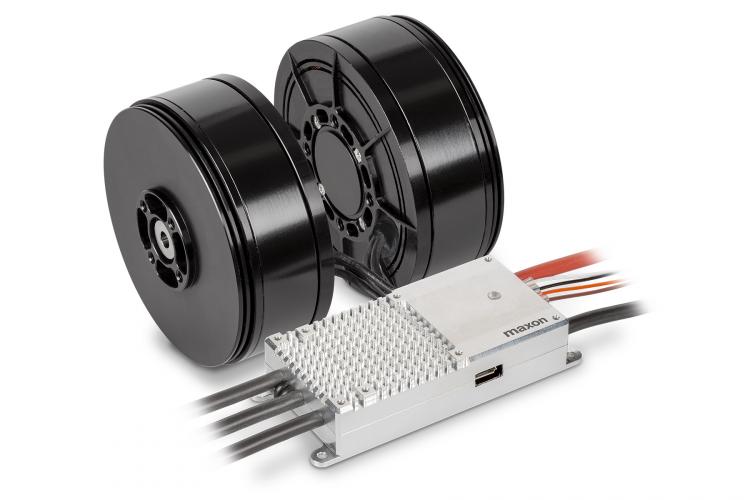
maxon offers custom drive developments for UAV projects and is constantly expanding its range of products for this area. The image shows the new EC 69 flat UAV motor with the UAV-ESC 52/30 controller. Both achieved exceptional results in service life tests.
With Flybotix, you have founded your own startup and at the end of 2020, you introduced an indoor inspection drone to the market. What’s special about it?
Most commercially available drones are quadcopters. These are relatively easy to build, but not very efficient when you reduce their size. The alternative helicopter approach is more efficient, but also more complex – in particular the so-called swashplates. I wanted to combine these two worlds and develop a drone that is compact and can fly as long as large quadcopters. The drive system of our ASIO drone is unique. It is an algorithmically controlled propulsion and steering mechanism with two degrees of freedom. That gives the drones the aerodynamic performance of a helicopter and the mechanical stability of a quadcopter. And efficient components such as the maxon BLDC motors enabled us double the flight time in comparison to conventional models.
What are the areas of application?
Our drones are intended for performing inspection tasks in constricted environments, such as chimneys, shafts, and tanks. On the one hand, this reduces the risk of accidents, and on the other, it saves money. During chimney inspections, for example, production comes to a complete standstill, potentially for several days. With a drone, a quick visual inspection can be performed to determine whether a major inspection is necessary at all.
How did the partnership between Flybotix and maxon come about?
I was looking for a partner that could develop the best motor for my project. At the EPFL, I met a sales engineer, because maxon has an Innovation Lab there for opening up new markets and projects. What a great concept! I presented my ideas, which were met with considerable interest, and we decided to cooperate. maxon developed modified BLDC motors for my drones, and I was available as a drone technology expert. Our startup also found its first home in the maxon Innovation Lab, for which I am very thankful. Without this partnership, we wouldn’t be where we are today.
What role can maxon play on the drone market?
The market for drones more and more requires reliable suppliers such as maxon, who can guarantee high quality with regard to products, processes, and certification. That’s why the market offers big opportunities for maxon’s drive systems consisting of motors, ESCs, and propellers.
Let’s look ahead to the future. How do you see drone technology developing?
From a technical point of view, the development of AI (artificial intelligence) will play an major role in the navigation of drones. It will make human intervention superfluous and, in combination with miniaturization, offer interesting new fields of application. Examples include logistics and delivery services, as well as agriculture and industrial inspections. And last but not least, transport of people using drones will soon become reality – perhaps in as little as ten years.
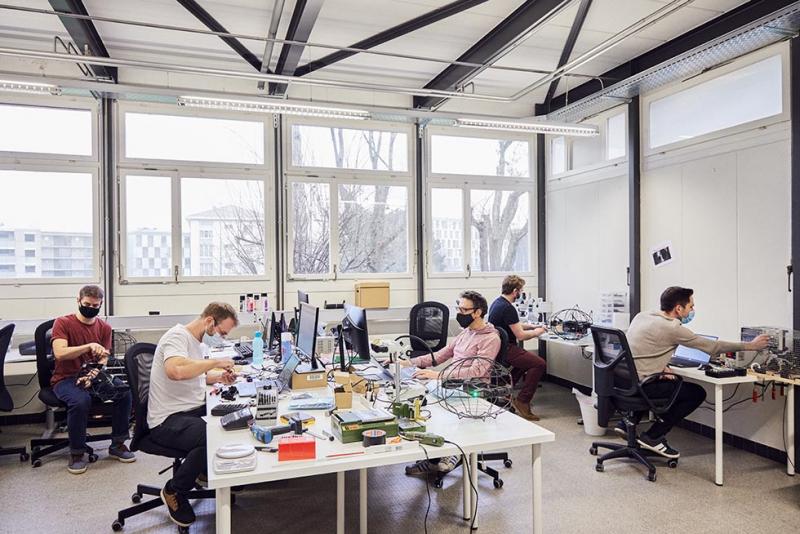
Flybotix Inc. is a startup located in Lausanne, Switzerland, and is one of the TOP 100 Swiss startups. The company develops the inspection drone ASIO, which operates in industrial facilities and was launched on the market at the end of 2020. Flybotix’s vision is for drones to autonomously navigate, inspect their environment, and interact. More: flybotix.com
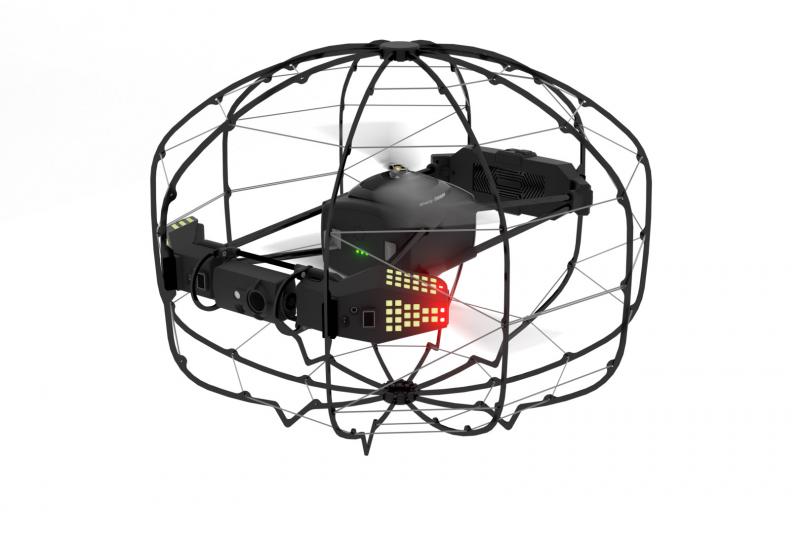
The ASIO drone of Flybotix is equipped with an algorithmically controlled propulsion and steering mechanism with two degrees of freedom, and has been developed for inspections in constricted environments.


